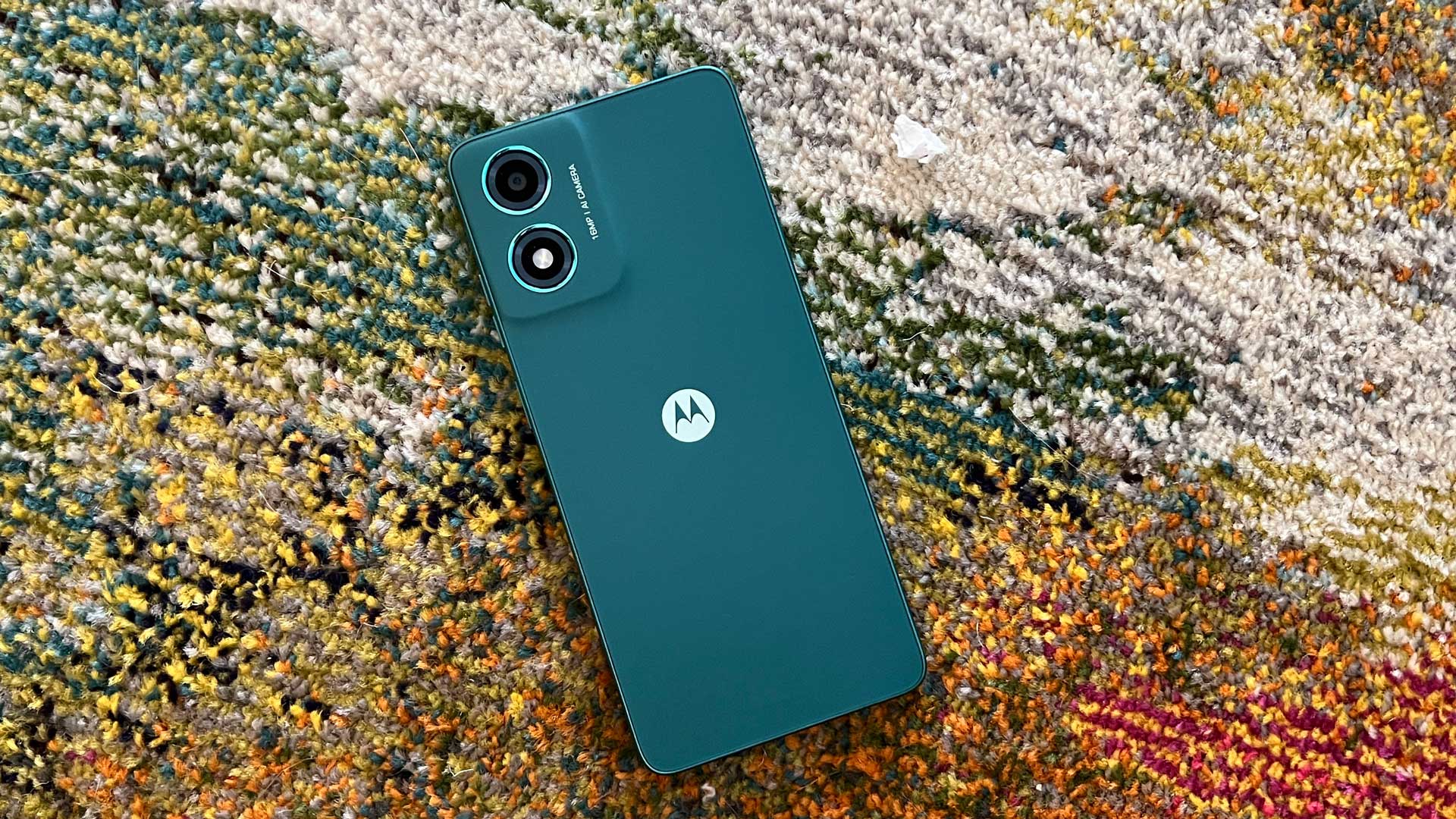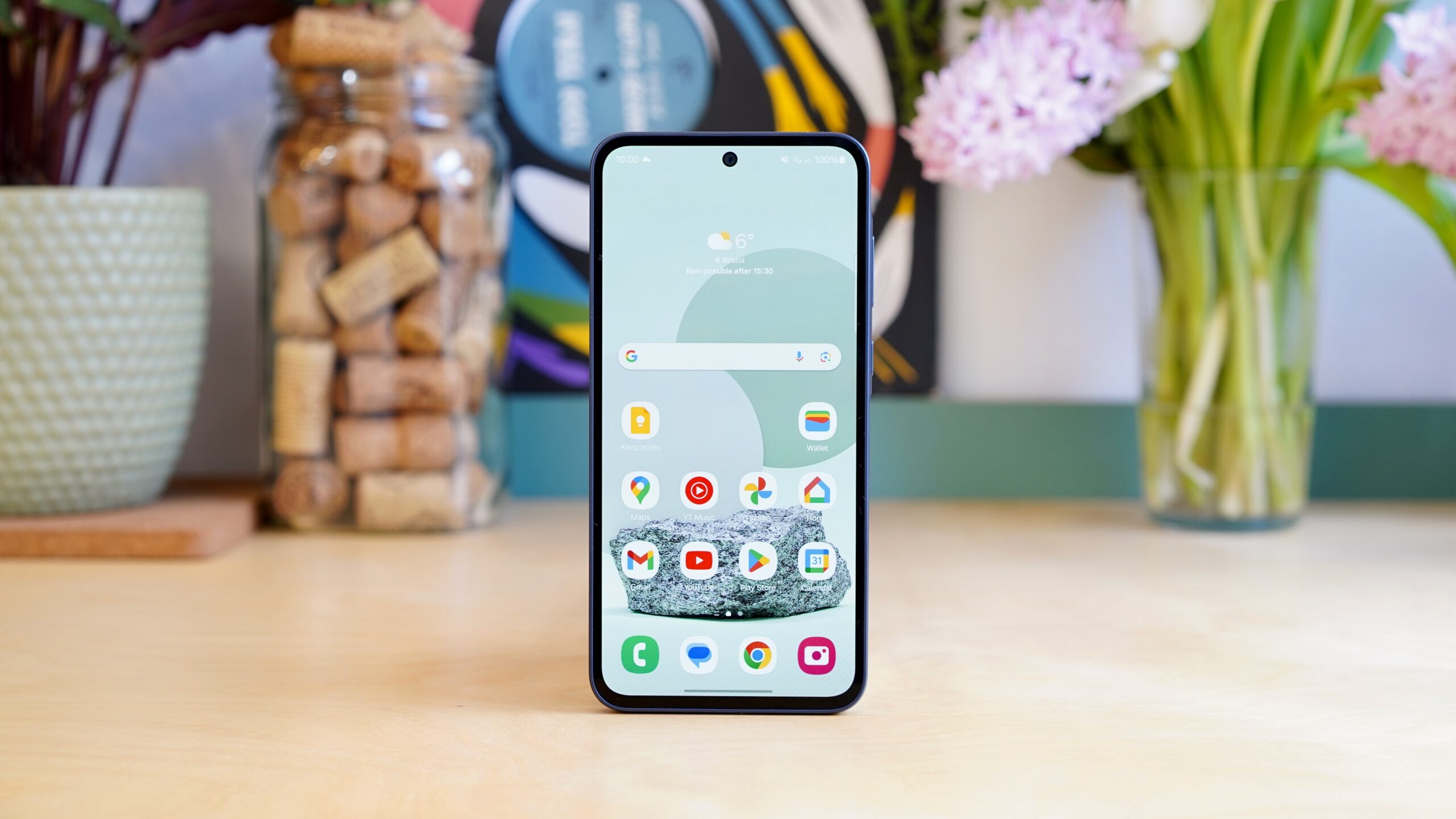Nubia Red Magic 7S Pro Review
An incredibly powerful gaming phone with slick physical controls
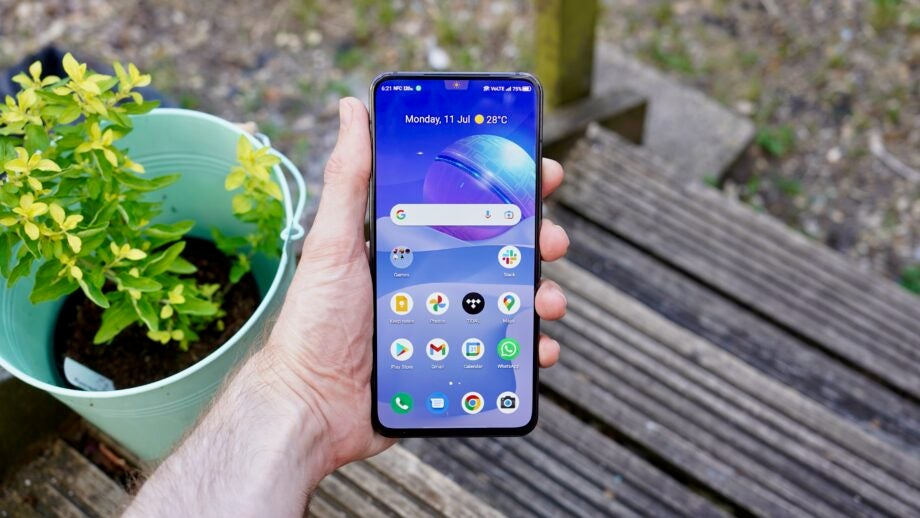

Verdict
The Red Magic 7S Pro is an incredibly powerful gaming phone with slick physical controls and a relatively reserved look, but it makes some weirdly non-gaming-friendly design decisions, and its software remains a mess.
Pros
- Stellar Performance
- Responsive gaming controls
- Not the gaudiest design for a gaming phone
Cons
- Awful, buggy UI
- In-display selfie cam an odd choice
- Battery not huge for a gaming phone
Availability
- UKRRP: £669
- USARRP: $729
- EuropeRRP: €779
- Canadaunavailable
- Australiaunavailable
Key Features
- Shoulder triggers520Hz shoulder trigger give you extra control when gaming
- High-end specs and internalsThe latest Snapdragon 8 Plus Gen 1 chipset, up to 18GB RAM and plenty of storage
- Big Battery5000mAh battery with (advertised) 65w fast charging
Introduction
ZTE’s erstwhile gaming phone sub-brand Nubia seems laser-focused on an iterative release schedule. Every six months or so you can bet your bottom dollar there’ll be a new ridiculously powerful, distractingly chunky, and surprisingly well-priced device to consider.
The latest of these is the Nubia Red Magic 7S Pro, which adds the latest Qualcomm processor and a couple of other hardware tricks to an otherwise familiar package.
It would have been nice to see the brand refining some of the line’s long-standing rough edges, and this still isn’t a phone we’d recommend to most people. But there’s no denying it’s a strong option for any hardcore mobile gamers who would prefer to downplay the gaudy gamer aesthetic.
Design and Screen
- Heavy, blocky body with in-display selfie cam
- Dedicated gaming controls
- 6.8-inch FHD+ AMOLED with 120Hz refresh rate
Nubia phones traditionally adopt a look that could almost be described as subtle within the decidedly un-subtle world of mobile gaming. The Nubia Red Magic 7S Pro is big and blocky, and you’d better believe there’s RGB lighting, but it’s not massively eye-catching like the ROG Phone 6.
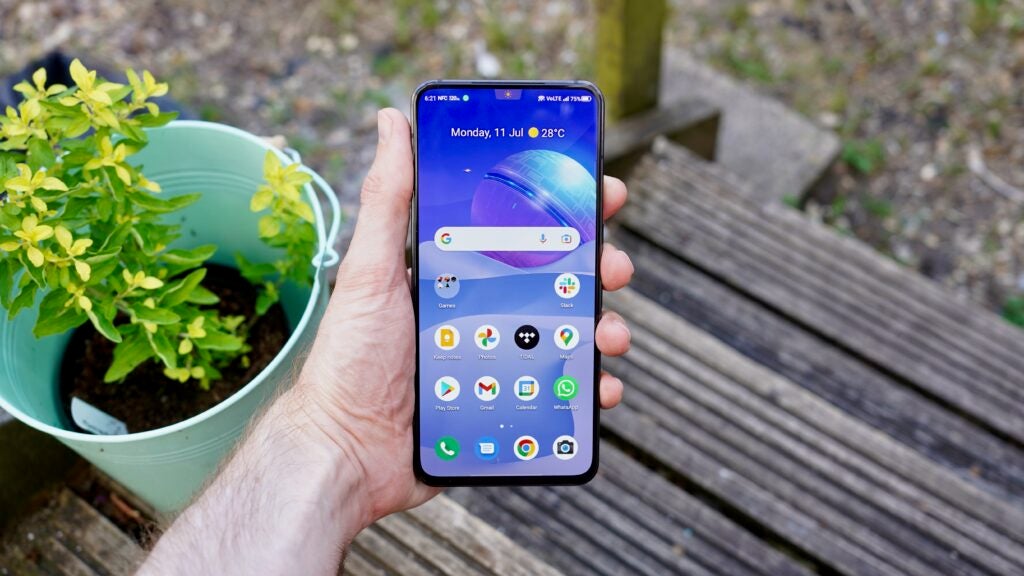
Unfortunately, it does roll back some of the aesthetic improvements made in last year’s Nubia Red Magic 6S Pro, chiefly with its size. With dimensions of 166.3 x 77.1 x 10mm, it’s far from demure, and a weight of 235g means that you’ll never have to pat your pocket to check whether you’ve picked your phone up.
From the front, the Red Magic 7S Pro is positively demure. The phone’s bezels are unusually minimal for a gaming phone, and the stand-out design flourish is an under-display selfie camera.
While the Red Magic 7S Pro is the most normal looking gaming phone from the front, however, I’m not sure this approach was the right one. Having a small forehead means that you notice the slightly thicker chin, which somehow makes the phone feel cheaper. It lacks the symmetry of its predecessors, too.
You don’t get dual front-facing speakers either, which is a decidedly non-gamer-friendly decision. The Red Magic 7 Pro and Red Magic 6S Pro didn’t have this either, and it continues to be a bit of an oversight on Nubia’s part.
Beyond that, the selfie camera simply isn’t very good. But we’ll discuss that further in the camera section.
The rear of the phone has a shiny black finish inlaid with a vaguely militaristic angular metal plate, which sports a combat camo finish. There are light-up RGB lights either side of that plate, which flash when you receive notifications.
I’ll leave it to you to conclude whether you think RGB lighting is ever a good thing in a phone. It’s very much part of that gamer aesthetic, which obviously has its fans.
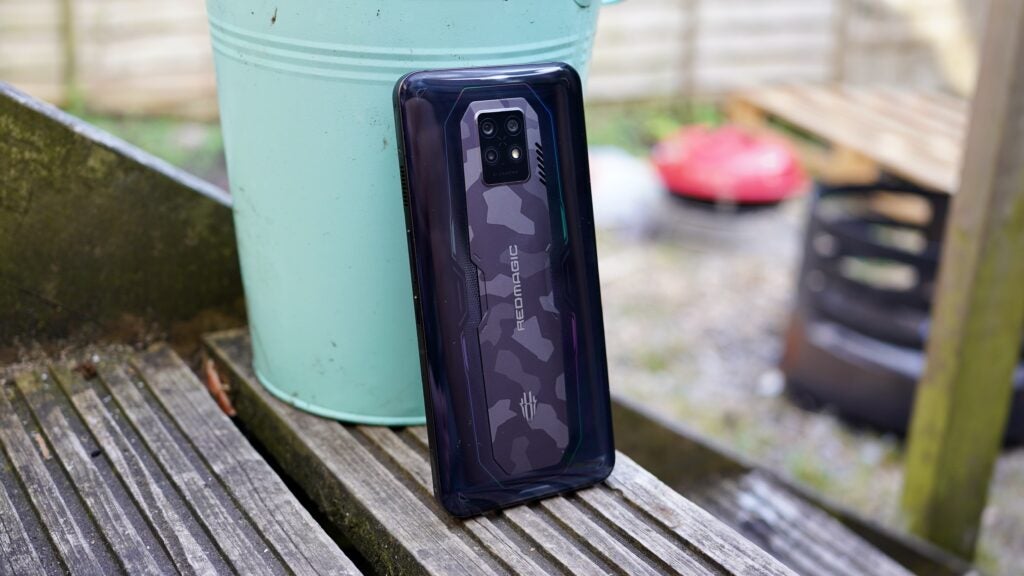
The phone’s thickness can be at least partially explained by the inclusion, once again, of a cooling fan. This boots up rather noisily whenever a relevant gaming app is started, and there are visible vents on the right edge and the rear of the phone.
Another important inclusion on the right-hand edge is a pair of dedicated 520Hz capacitive trigger buttons, which can be mapped to control functions in games – or at least, in those that permit you to fine tune and remap controls. In competitive shooters like CoD Mobile and Apex Legends Mobile, this is a literal game changer. Having dedicated controls for aiming down sights and shooting gives a definite competitive edge, and makes the games more tactile and thus fun to boot.
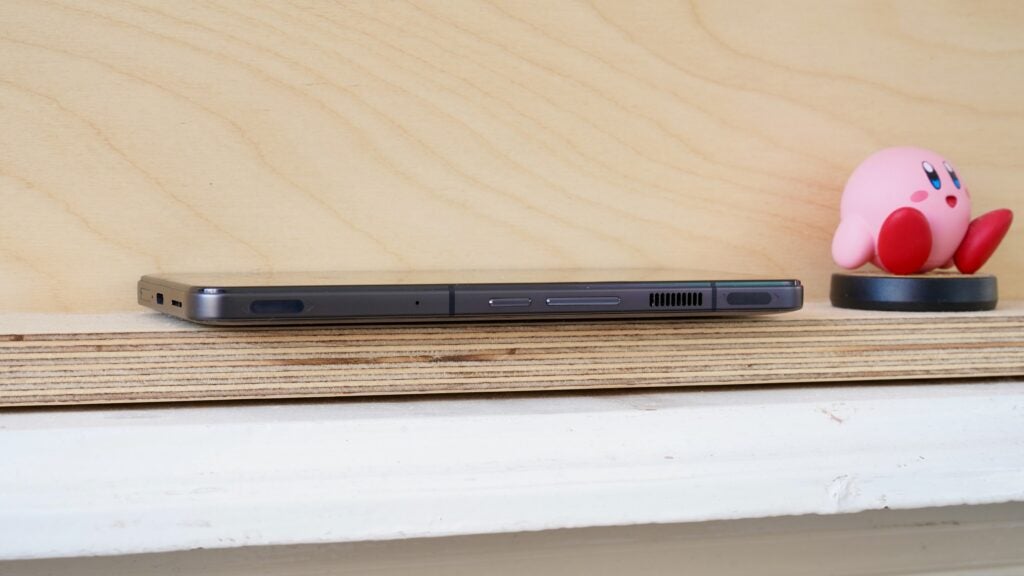
On the opposite edge to these buttons lies a Game Boost Switch button, which instantly boots up Nubia’s Game Space tool. This menu lets you max out the phone’s performance settings when playing certain games, as well as configuring the sensitivity of the shoulder buttons, adjusting the sound output, and more.
You also benefit from a 3.5mm headphone jack, which is a normal feature to have in a gaming phone, where low-latency personal audio is imperative (and too rarely considered in Bluetooth earphones). There’s still no IP splash-resistance rating though, which is a shame.
The Red Magic 7S Pro is fronted by a large 6.8-inch AMOLED display with a 120Hz refresh rate. This isn’t as fluid as the ROG Phone 6, or even the Red Magic 6S Pro, both of which go to 165Hz. Precious few games actually take advantage of such a high refresh rate, however, so I can understand the decision.
Conversely, this display does support up to a 960Hz touch sampling rate, which makes it extremely responsive to your inputs. The aforementioned Red Magic 6S Pro will only hit 720Hz, so you’ll have to weigh up which flavour of Hz is the more important to you.
There’s a 1080 x 2400 maximum resolution, which is just right for a gaming phone. More pixels means fewer frames per second, after all, and regular content looks plenty sharp at this resolution.
One criticism that I have of the screen is that it doesn’t get massively bright, with Nubia itself only claiming that it goes up to 600 nits. It’s not bad, exactly, but I found myself cranking the brightness slider right up to near-full even when indoors.
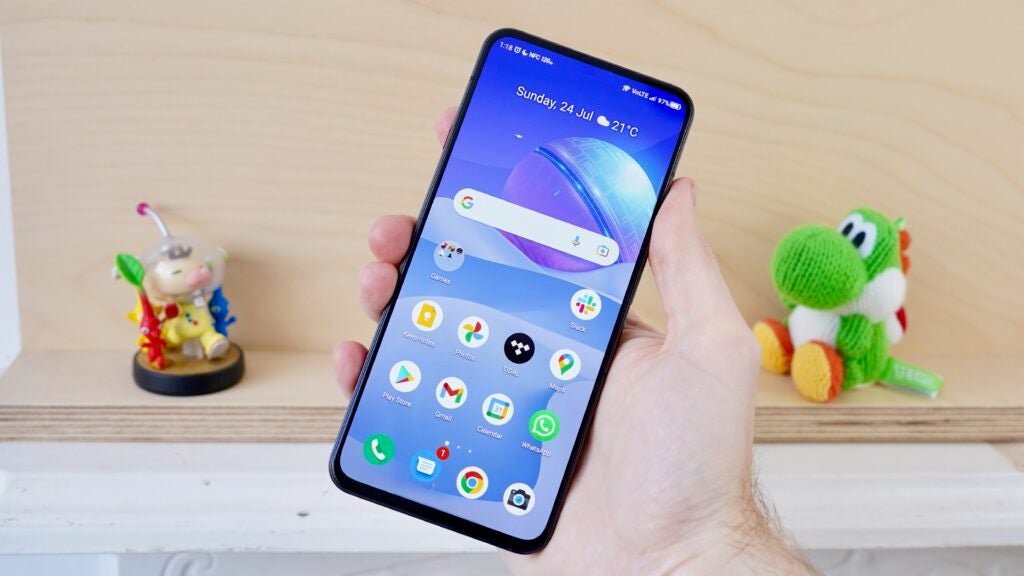
Camera
- 64MP wide, 8MP ultra-wide, and 2MP macro
- Mediocre performance
- Terrible under-display selfie camera
Gaming phones don’t tend to have great cameras. It’s just a fact that this is one of the first specs to suffer in service to those extra performance-enhancing components.
Unsurprisingly, the Red Magic 7S Pro’s camera system is pretty much unchanged from the Red Magic 7 Pro and even last year’s Red Magic gaming phones. It’s led by the same 1/1.97” 64MP wide sensor with an f/1.8 aperture, which is accompanied by the same 1/4.0″ 8MP ultrawide.
There is no telephoto, with only a miserly 2MP macro sensor to back those main cameras up. It all screams “mid-range”.
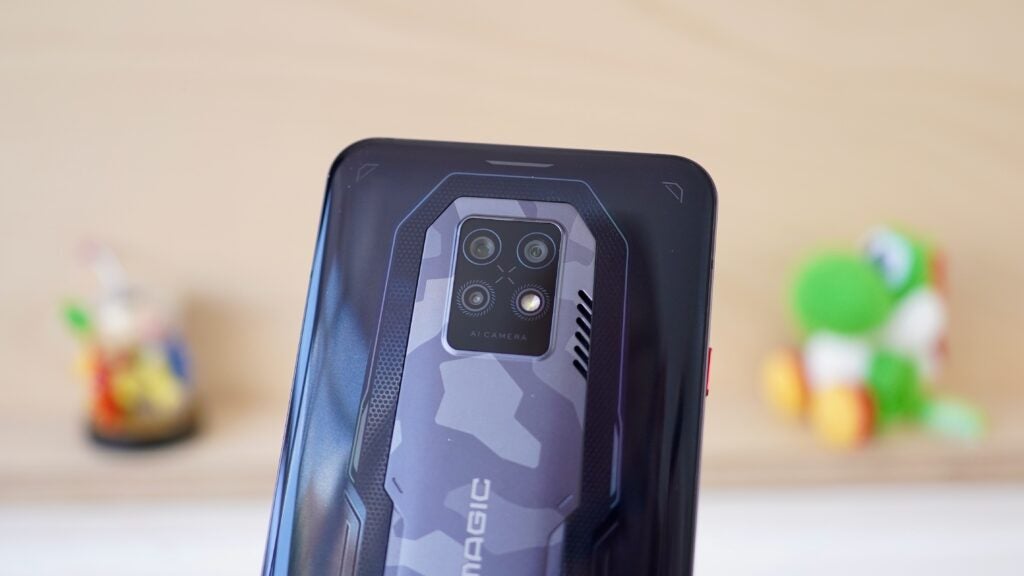

You get a similar level of performance to previous Red Magic cameras. Detail and exposure are acceptable in good lighting, but the results deteriorate quite a bit in low light. The included Night mode isn’t the worst I’ve seen, but the results are decidedly lower-mid-range, with plenty of noise and a general lack of sharpness that you associate with a lack of OIS and bog-standard algorithms.


The main camera on the OnePlus Nord 2T, the Realme 9 Pro Plus, and of course the Pixel 6a make mincemeat out of the Red Magic 7S Pro – all for less than £400.
The ultrawide represents a considerable step down in dynamic range and exposure, with cooler colours and much worse detail. 2x zoomed shots are actually quite usable here, thanks to that surplus of pixels, but cropping in any further brings the noise.
All of this is compounded by Nubia’s continued insistence on watermarking shots by default. Given the evident lack of photographic chops here, it feels like a strangely braggadocious move to shout about the camera.
Selfie shots are truly terrible. It’s not so much the humble 8MP sensor that’s been used, but rather the fact that it’s been positioned under the display, meaning that it simply doesn’t receive the same unimpeded light as a ‘normal’ selfie cam. The result is incredibly soft shots with terrible exposure, overblown highlights, and washed out skin tones.





Performance
- Actively cooled Snapdragon 8 Plus Gen 1 with 12/16/18GB Ram
- One of the fastest Android phones on the market
- Clunky, buggy Red Magic 5.5 UI
The Red Magic 7S Pro’s key strength is its performance. The switch up to the Snapdragon 8 Plus Gen 1 is pretty much the whole reason it exists as a successor to the already very capable Red Magic 7 Pro.
Together with 12, 16, or a staggering 18GB of RAM, it’s a phone that dominates the benchmarks. An average Geekbench 5 single-core score of 1314 and a multi-core score of 4124 pitches it right up there with the ROG Phone 6 near the top of the table. It only really falls behind the iPhone 13 family in this regard.
GPU tests are similarly impressive. Like with the similarly equipped ROG Phone 6, the Red Magic 7S Pro proved to be too powerful for some of our 3D Mark benchmarks, maxing out for the Slingshot Extreme and Wild Life tests.
One test it did return a score for was Wild Life Extreme, which is a high-grade graphics performance workout. Here it scored 2832, which again is equal to the ROG Phone 6. The Samsung Galaxy S22 Plus, by way of a comparison, scored 1926. The iPhone 13 Pro scored 2944, while an non-gaming phone with the Snapdragon 8 Plus Gen 1 chip that will go unnamed for embargo reasons scored 2804.
Perhaps more telling is the Wild Life Extreme Stress Test, which runs the aforementioned test 20 times consecutively. The Red Magic 7S Pro’s scores remained remarkably consistent from loops 1 to 20, whereas the non-gaming Snapdragon 8 Plus Gen 1 phone and the iPhone 13 Pro both dropped off dramatically as thermal throttling kicked in.
In practical gaming terms, I was able to run Genshin Impact at the very highest settings, with the frame rate set to 60fps, with barely a stutter to the silky-smooth frame rate. This was with the processor cranked up to the top ‘Rise’ setting in the Game Space menu.
It’s under such extended strain that the 7S Pro’s noisy cooling fan and oversized heat dissipation system really show their worth. Where slim flagship phones have to throttle way back after a few sustained minutes of gameplay, the Nubia 7S Pro can maintain its level of performance.
The Storage provision runs from 256GB at the low end, which is impressive in itself, through 512GB and 1TB. It’s a good job, really, given that there’s no expandable storage.
This is typically the part of the review where I tell you that all the great hardware in the world can’t quite cover for Nubia’s terrible software. And while I’d love to say that the Red Magic 7S Pro is the phone to buck that trend, well, it isn’t.
While the phone runs on Android 12, there’s precious little evidence of Google’s slick OS here. The home screen is dominated by hulking great widgets for the cooling fan, a readout of today’s game time, and your heart rate. None of which is of any use whatsoever.
You’ll note that my handset shots don’t show any of these. That’s simply because I couldn’t bring myself to use the phone in this default fashion on a day-to-day basis. It’s excruciatingly clunky and wasteful, and leaves precious little space for useful day-to-day apps.
The Red Magic 5.5 software is buggy, too. I picked up on occasional stutters on the home screen and when browsing web content, which is inexcusable given the level of performance on tap here.
Elsewhere, the Battery Settings screen refused to tell me how much screen-on time I’d had in a day, which is rather irritating when reporting such facts and figures is part of my job.
The fingerprint sensor was initially quite unresponsive, too. It was fixed by a reset and remap, but you really shouldn’t need to do such a thing in a modern phone.
Elsewhere, it’s the usual case of bad translation. When the battery life warning notification pops up, you’re asked to hit a button containing the word ‘Knew’. It all just feels very slap-dash.
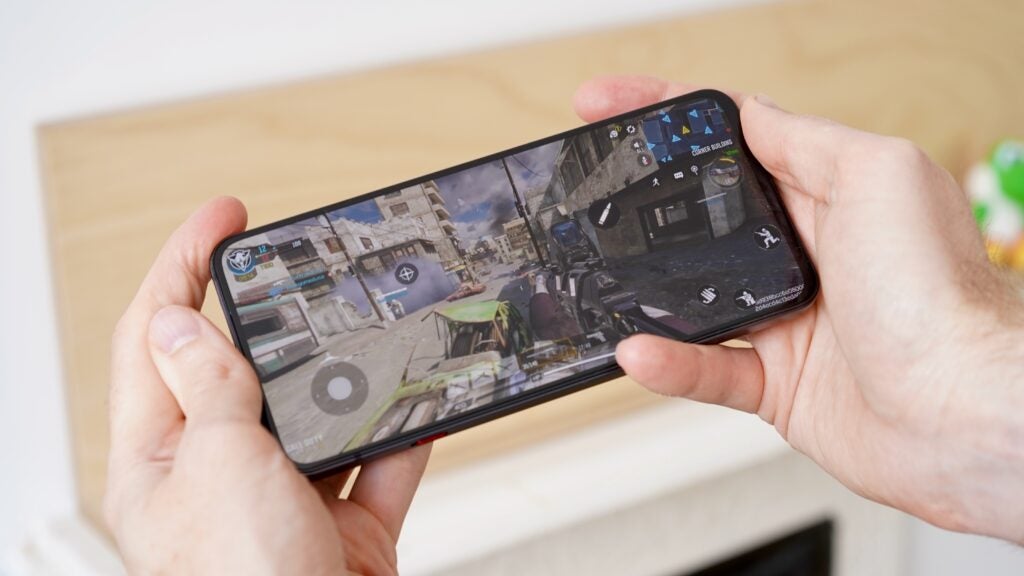
Battery life
- 5000mAh battery slightly small for gaming phone
- All day battery life in general use
- Slightly buggy 65W charging
Nubia has equipped its phone with a 5000mAh battery. That’s normal for a regular phone, but isn’t all that big for a gaming phone. The Asus ROG Phone 6 is more typical with its 6000mAh cell.
In general use, however, that’s not a problem. I was able to get through a full day of moderate usage with around half a tank left.
There’s a notable caveat here, however. As I noted in the previous section, the buggy Regmagic 5.5 software means that I’m unable to tell you how much screen-on time I managed to get through in a day.
While I’m on the topic of bugs, I observed another strange one in that the Red Magic 7S Pro refused to fast-charge when I ran it completely dry. It would recharge at a hugely inhibited rate until I reset the charging process.
What I can say is that the phone’s bundled-in 65W charger got the phone from 1 to 59% in 15 minutes, and up to 93% in 30 minutes. It hit 100% in around 35 minutes.
Another slight downer is that the Red Magic 7S Pro doesn’t include wireless charging, though this is quite typical of a gaming phone. Manufacturers tend to favor meaty cooling systems and fast charging, and to save money elsewhere. It’s a fair trade-off for a gaming-focused crowd.
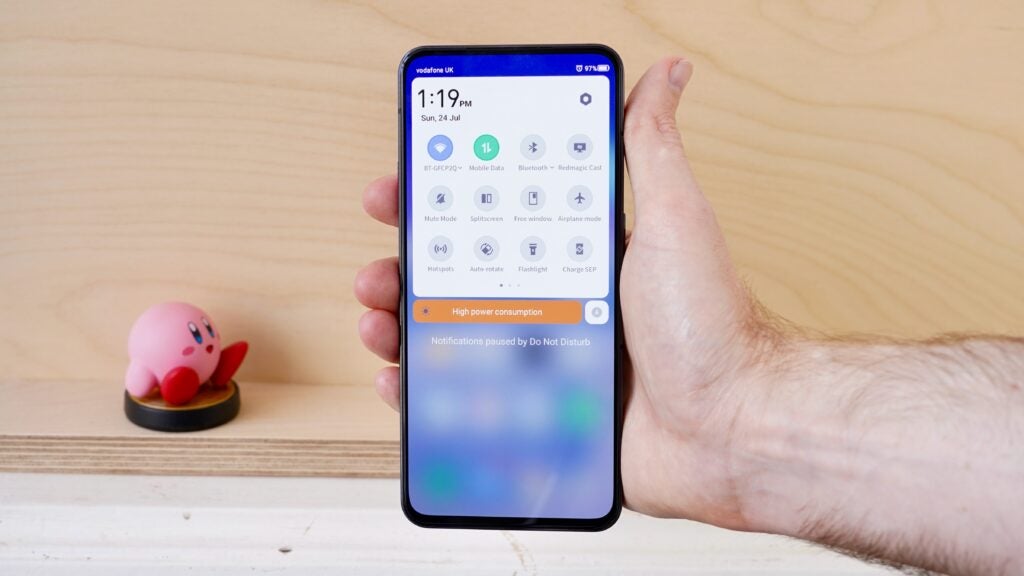
Latest deals
Should you buy it?
You want the best mobile gaming experience. Sustain top-tier performance and dedicated buttons make this one of the best choices out there for competitive gamers
You want a clean software experience. Red Magic’s UI is a mess of chunky icons, superfluous widgets, irksome bugs, and poor translation
Final Thoughts
You won’t find an Android phone that’s more powerful than the Red Magic 7S Pro right now. Its Snapdragon 8 Plus Gen 1 chip, coupled with a monstrous cooling system and bags of RAM make it the match of the ROG Phone 6 for sustained performance.
Couple that with responsive controls and a large, fast display, and you have a fine phone for competitive gamers. Meanwhile the design, while bulky, isn’t quite as in-your-face as certain gaming phone rivals.
However, not all of Nubia’s decisions make sense. Opting for an in-display selfie camera rather than a balanced design and dual front-firing speakers doesn’t speak to a strict gaming focus, nor does the lack of an unusually large battery.
All in all, while the Red Magic 7S Pro is a more-than-solid option for hardcore mobile gamers, the ROG Phone 6 is far more uncompromising and just plain better at what it does.
How we test
We test every mobile phone we review thoroughly. We use industry standard tests to compare features properly and we use the phone as our main device over the review period. We’ll always tell you what we find and we never, ever, accept money to review a product.
Used as our main handset during test period
Camera tested in variety of situations with all modes
Tested with synthetic benchmarks and real world use
FAQs
Trusted Reviews test data
Full specs
Sustainability
TrustedReviews’ holds the fact that global warming is not a myth as a core value and will continuously endeavor to help protect our planet from harm in its business practices.
As part of this mission, whenever we review a product we send the company a series of questions to help us gauge and make transparent the impact the device has on the environment.
We currently haven’t received answers to the questions on this product, but will update this page the moment we do. You can see a detailed breakdown of the questions we ask and why in our sustainability info page.
Jargon buster
USB-C
The modern USB connector you’ll find on most Android phones, new laptops, cameras and games consoles. It’s reversible and used for charging along with data-transfer.OLED
Organic Light Emitting Diode is panel technology that allows each individual pixel to produce light rather than relying on a backlight. This enables the screen to accurately display blacks by turning off the pixel, resulting in improved contrast compared to conventional LCD panels.Nits
The brightness level of a display. 300 nits is regarded as the minimum target for high-end screens.

